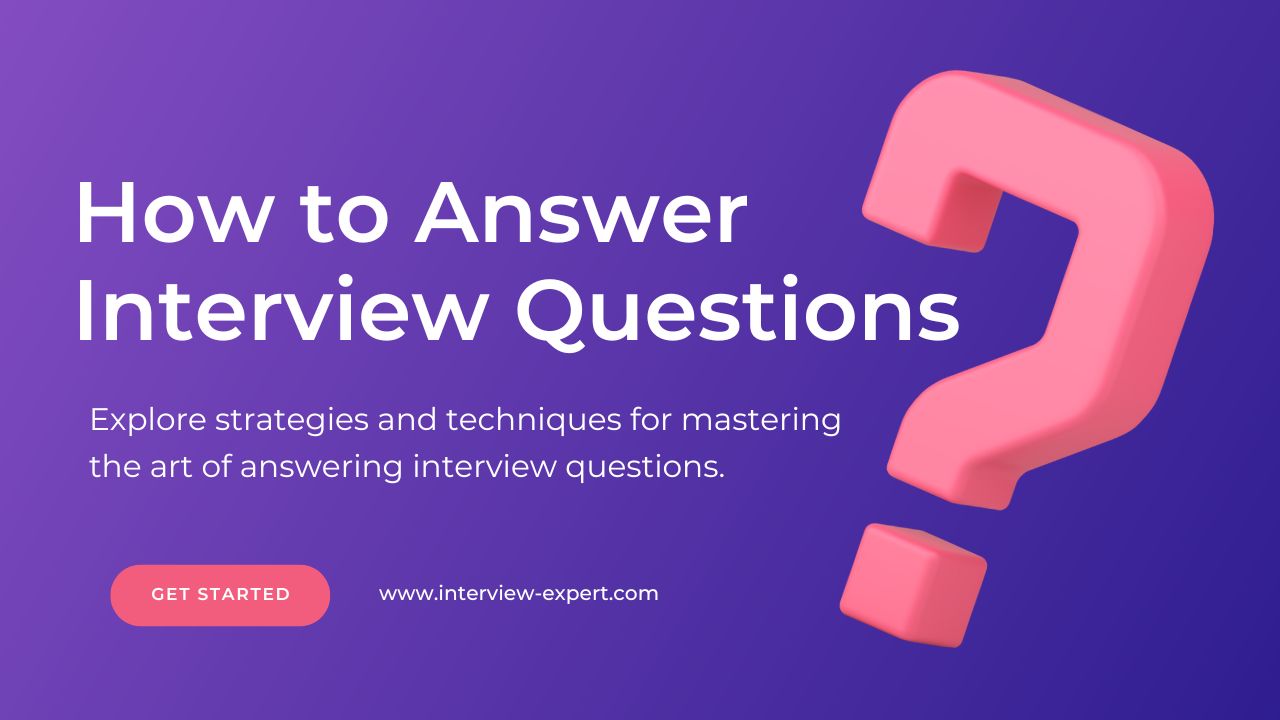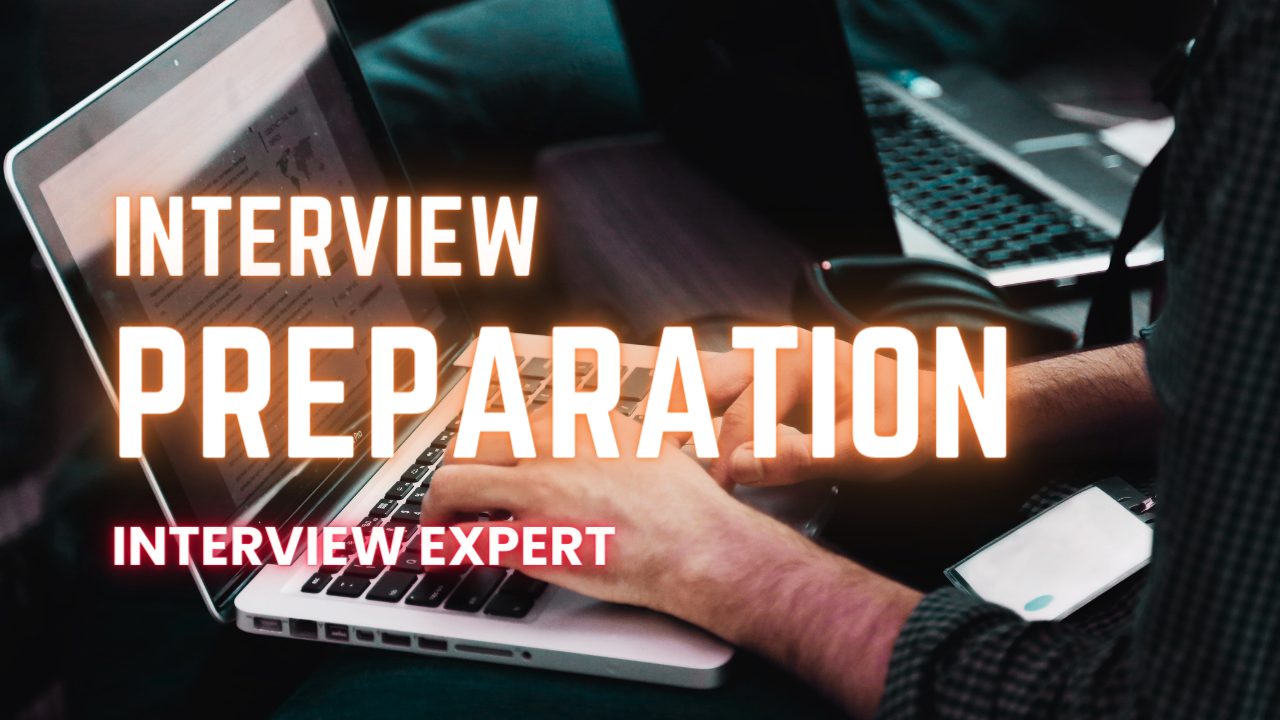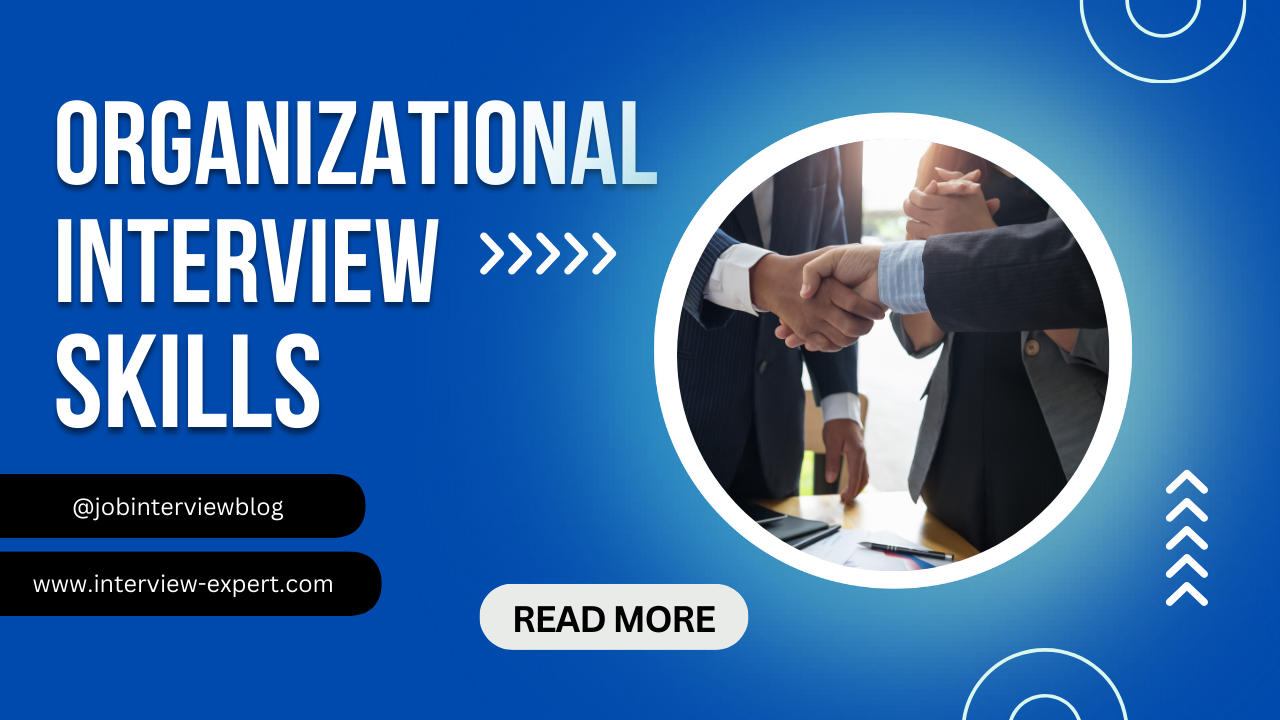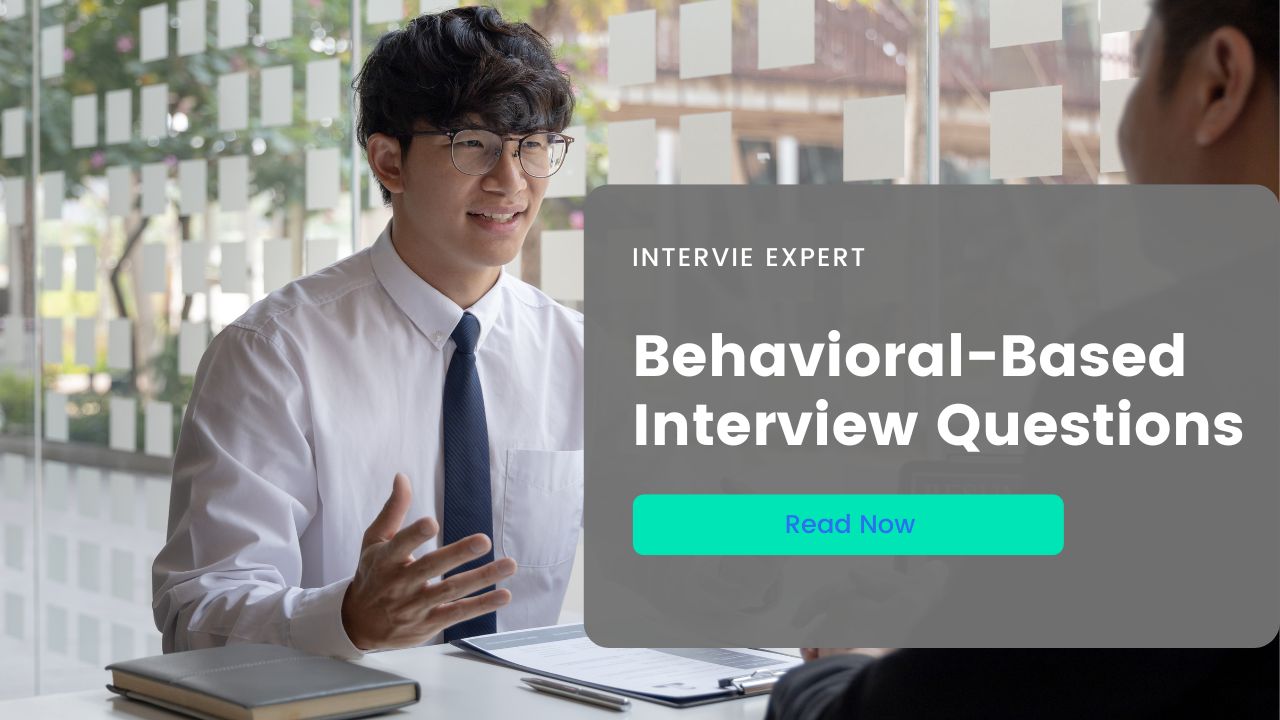Guide to Common Interview Questions (Part 2)
This blog picks up where the previous blog left off with Common Job Interview Questions. Job interviews serve as the crucial gateway between aspiring candidates and their desired professional roles. They are not only an opportunity for employers to assess a candidate’s qualifications and skills but also a chance for the interviewee to showcase their suitability for the position. To prepare effectively for this pivotal encounter, it is essential to familiarize oneself with common job interview questions. This blog aims to explore some of the frequently asked questions, offering insights into effective responses and strategies for success.
Describe a Challenging Situation and How You Overcame It:
Behavioral questions like these assess a candidate’s problem-solving skills and resilience. The STAR method (Situation, Task, Action, Result) is an effective framework for structuring responses. By providing specific examples, candidates can demonstrate their ability to navigate challenges and contribute positively to the workplace. In the landscape of job interviews, the question “Describe a challenging situation and how you overcame it” is a common yet powerful inquiry. Employers pose this question to assess a candidate’s problem-solving abilities, resilience, and capacity to thrive under pressure. This blog delves into the art of responding to this question, offering insights into crafting a compelling narrative that showcases not only your ability to face challenges head-on but also your capacity for growth and success.
- Choose a Relevant Example: Begin by selecting a challenging situation from your professional history that is relevant to the job you’re interviewing for. The key is to choose an example that highlights your skills and demonstrates your ability to navigate challenges within the context of the role.
- Structure Your Response with the STAR Method: Organize your answer using the STAR method: Situation, Task, Action, and Result. Start by briefly outlining the situation or challenge you faced (S), followed by the specific task or objective you needed to accomplish (T). Then, delve into the actions (A) you took to address the challenge, and conclude by highlighting the positive outcome or result (R).
- Focus on Your Contribution: While it’s crucial to provide context, ensure that your response emphasizes your individual contribution to overcoming the challenge. Highlight the specific role you played, the decisions you made, and the actions you took. This allows the interviewer to gain insights into your problem-solving skills and leadership capabilities.
- Highlight Problem-Solving Skills: Clearly articulate the steps you took to address the challenge. Discuss the strategies and problem-solving methodologies you employed. Emphasize critical thinking, creativity, and any innovative approaches that contributed to resolving the situation. This showcases your ability to think on your feet and generate effective solutions.
- Demonstrate Adaptability: Challenges often require adaptability. Illustrate how you adapted to changing circumstances, reassessed strategies when necessary, and remained flexible in your approach. This not only highlights your resilience but also your capacity to thrive in dynamic and unpredictable work environments.
- Acknowledge Team Collaboration: If the challenge involved collaboration with others, acknowledge the teamwork involved. Discuss how you effectively communicated with colleagues, delegated tasks when needed, and fostered a collaborative environment. This demonstrates interpersonal skills and an understanding of the importance of teamwork in overcoming challenges.
- Discuss the Learning Experience: Conclude your response by reflecting on what you learned from the challenging situation. Discuss any personal or professional growth that resulted from overcoming the obstacle. Employers value candidates who view challenges as opportunities for learning and development.
- Be Honest and Professional: Maintain a professional tone throughout your response. Be honest about the challenges you faced and any mistakes made, but focus on the positive outcomes and the lessons learned. This authenticity can enhance your credibility with the interviewer.
Conclusion:
Effectively responding to the question, “Describe a challenging situation and how you overcame it,” requires a strategic blend of storytelling, problem-solving prowess, and self-reflection. By selecting a relevant example, structuring your response with the STAR method, emphasizing your individual contribution, and showcasing adaptability and teamwork, you can craft a compelling narrative that not only impresses the interviewer but also provides valuable insights into your ability to overcome challenges in the professional realm.
Where Do You See Yourself in Five Years:
This question assesses a candidate’s long-term commitment and career aspirations. Responding with a well-thought-out plan that aligns with the prospective employer’s goals and demonstrates ambition while remaining realistic can leave a positive impression. The question, “Where do you see yourself in five years?” often emerges as a standard inquiry in job interviews. This seemingly straightforward question is a strategic tool employed by employers to gauge a candidate’s career aspirations, commitment, and alignment with the company’s long-term goals. This blog explores the art of responding to this question, providing insights into constructing a compelling narrative that not only demonstrates your ambition but also showcases your strategic thinking and potential contributions to the organization.
- Align Your Response with Career Goals: Begin your response by aligning your future vision with your career goals. Demonstrate that you have a clear understanding of your professional trajectory and that the position you’re interviewing for fits into your broader aspirations. This alignment indicates a purposeful approach to your career.
- Express Commitment to Professional Development: Emphasize your commitment to continuous learning and professional development. Discuss your interest in acquiring new skills, staying abreast of industry trends, and seeking opportunities for growth within the company. This highlights your dedication to self-improvement and adaptability.
- Connect Your Goals to the Company: Showcase how your professional goals align with the company’s objectives. Discuss specific aspects of the organization’s mission, projects, or future initiatives that resonate with your ambitions. This not only underscores your genuine interest in the company but also positions you as a candidate who can contribute to its success.
- Demonstrate Ambition and Leadership Potential: Express ambition in your response, but balance it with a focus on the value you can bring to the organization. Discuss how you aspire to take on additional responsibilities, contribute to strategic initiatives, or perhaps even assume a leadership role within the company. This conveys your commitment to making a meaningful impact.
- Be Realistic and Grounded: While expressing ambition, ensure that your goals are realistic and grounded in the context of the role and the company. Unrealistic or overly ambitious statements may raise concerns about your understanding of the position or the company’s structure. Strike a balance between aspiration and pragmatism.
- Highlight Your Adaptability: Acknowledge that the future is dynamic and that your goals may evolve based on changing circumstances. Highlight your adaptability and openness to exploring new opportunities within the company. This flexibility demonstrates a realistic understanding of the uncertainties that may arise in a professional journey.
- Emphasize Your Value Proposition: Conclude your response by reiterating the value you intend to bring to the company. Emphasize how your skills, experiences, and goals align with the company’s needs, reinforcing the notion that your future aspirations are mutually beneficial for both you and the organization.
- Tailor Your Response to the Company Culture: Consider the company culture when formulating your response. If the organization values innovation, emphasize how your goals align with driving innovation. If teamwork is a cornerstone, discuss how your aspirations involve collaborative initiatives. Tailoring your response to the company culture enhances its relevance.
Conclusion:
Effectively responding to the question, “Where do you see yourself in five years?” requires a strategic and thoughtful approach. By aligning your response with your career goals, expressing commitment to professional development, connecting your aspirations to the company, demonstrating ambition with a focus on value, being realistic and adaptable, and tailoring your response to the company culture, you can craft a narrative that not only impresses the interviewer but also positions you as a candidate with a clear vision for the future and a commitment to contributing to the organization’s success.
How Do You Handle Stress and Pressure:
In today’s fast-paced work environments, employers value individuals who can thrive under pressure. Candidates should discuss their coping mechanisms, time-management skills, and past experiences that showcase their ability to remain composed and effective in high-stress situations. In the dynamic landscape of today’s professional world, the ability to handle stress and pressure is a critical skill. Employers often seek candidates who can remain composed and effective in challenging situations. The question, “How do you handle stress and pressure?” is a common inquiry in job interviews, offering candidates an opportunity to showcase their resilience and coping mechanisms. This blog explores the art of responding to this question, providing insights into constructing a thoughtful and effective narrative that not only reassures the interviewer but also positions you as a candidate capable of thriving in demanding work environments.
- Acknowledge the Normalcy of Stress: Begin your response by acknowledging that stress is a normal part of any professional environment. By framing stress as a common and expected aspect of the workplace, you demonstrate a realistic understanding of the challenges that may arise in the job.
- Provide Examples from Past Experiences: Illustrate your ability to handle stress by drawing on specific examples from your past experiences. Discuss a situation where you successfully managed stress and pressure, highlighting the strategies and actions you employed to navigate challenges. Real-life examples provide tangible evidence of your resilience.
- Highlight Your Organizational Skills: Emphasize your organizational skills and time-management abilities. Discuss how you prioritize tasks, set realistic deadlines, and use effective planning to manage workloads. This showcases your proactive approach to stress and demonstrates your ability to maintain control over challenging situations.
- Discuss Your Problem-Solving Skills: Stress often accompanies complex problems. Showcase your problem-solving skills by describing instances where you successfully addressed challenges. Discuss the steps you took to analyze the situation, identify solutions, and implement effective strategies. This demonstrates your capacity to think critically under pressure.
- Emphasize Effective Communication: Effective communication is crucial in high-stress scenarios. Discuss how you communicate with team members, superiors, or clients during stressful situations. Highlight instances where clear communication played a pivotal role in resolving issues and preventing escalation.
- Showcase Adaptability and Flexibility: Stressful situations often require adaptability. Illustrate how you remain flexible in the face of changing circumstances. Discuss instances where you adjusted your approach, pivoted when necessary, and remained adaptable to meet evolving challenges.
- Discuss Stress Management Techniques: Articulate specific stress management techniques that you employ. This could include practices such as deep breathing, mindfulness, or taking short breaks to recalibrate. Demonstrating a proactive commitment to self-care highlights your awareness of the importance of maintaining mental well-being.
- Conclude with Positive Outcomes: Conclude your response by highlighting positive outcomes resulting from your ability to handle stress. Discuss how your resilience led to successful project completion, team cohesion, or innovative problem-solving. Positive outcomes reinforce the effectiveness of your stress management approach.
- Be Honest and Authentic: Maintain honesty and authenticity throughout your response. Acknowledge that stress is a part of professional life and that, like everyone, you may encounter challenging situations. Being genuine about your experiences and coping mechanisms enhances your credibility with the interviewer.
Conclusion:
Effectively responding to the question, “How do you handle stress and pressure?” is an opportunity to showcase your resilience, problem-solving skills, and proactive approach to challenging situations. By acknowledging the normalcy of stress, providing examples from past experiences, highlighting organizational and communication skills, showcasing adaptability and flexibility, discussing stress management techniques, and concluding with positive outcomes, you can construct a thoughtful narrative that not only answers the interviewer’s question but also positions you as a candidate who thrives under pressure.
What is Your Greatest Professional Achievement:
This question provides an opportunity to showcase concrete examples of one’s impact in previous roles. Candidates should choose an achievement that aligns with the job they’re applying for and use the STAR method to highlight their contributions and the positive outcomes. In the realm of job interviews, the question “What is your greatest professional achievement?” serves as a pivotal moment for candidates to showcase their accomplishments, skills, and contributions. Crafted strategically, the response to this inquiry becomes a compelling narrative that not only highlights your capabilities but also reinforces your value to the prospective employer. This blog explores the art of responding to this question effectively, providing insights into constructing a thoughtful and impactful story that leaves a lasting impression.
- Choose a Relevant Achievement: The key to a successful response is selecting an achievement that is both significant and relevant to the job you are interviewing for. Tailor your choice to align with the skills and qualities the employer is seeking. This ensures that your accomplishment resonates with the specific requirements of the position.
- Utilize the STAR Method: Structure your response using the STAR method (Situation, Task, Action, Result). Begin by describing the situation or challenge you faced (S), outline the specific task or goal you needed to accomplish (T), detail the actions you took to address the challenge (A), and conclude by highlighting the positive results or outcomes (R). This framework provides a clear and organized structure to your narrative.
- Quantify Your Achievements: Quantifying your achievements adds depth and credibility to your response. Where possible, use numbers, percentages, or other metrics to provide tangible evidence of the impact of your accomplishment. This not only adds substance to your story but also communicates the scale and significance of your contribution.
- Emphasize Your Role and Leadership: Clearly articulate your role in the achievement and emphasize any leadership or initiative you demonstrated. Discuss the decisions you made, the responsibilities you undertook, and the impact of your actions. This allows the interviewer to gain insights into your ability to take charge and make meaningful contributions.
- Connect the Achievement to Transferable Skills: Illustrate how the skills and qualities demonstrated in your achievement are transferable to the prospective role. Whether it’s leadership, problem-solving, teamwork, or project management, connect the dots between your past success and the skills that make you a valuable asset to the new position.
- Highlight Challenges Overcome: Don’t shy away from discussing challenges or obstacles you faced during the achievement. Describe how you navigated difficulties and adapted your approach to overcome them. This demonstrates resilience, problem-solving abilities, and a proactive attitude in the face of challenges.
- Express Humility and Gratitude: While showcasing your achievement, maintain a humble and grateful tone. Acknowledge the contributions of your team, if applicable, and express gratitude for the opportunities and support that contributed to your success. This underscores your ability to work collaboratively and appreciate the collective effort.
- Tailor Your Response to the Company: Consider the values and priorities of the company when formulating your response. Tailor your achievement to align with the organization’s goals and culture. This demonstrates your understanding of the company’s needs and your capacity to contribute meaningfully.
Conclusion:
Answering the question, “What is your greatest professional achievement?” provides an invaluable opportunity to present a narrative that encapsulates your skills, contributions, and the impact you can bring to a prospective employer. By choosing a relevant achievement, utilizing the STAR method, quantifying your success, emphasizing your role and leadership, connecting the achievement to transferable skills, highlighting challenges overcome, expressing humility and gratitude, and tailoring your response to the company, you can craft a response that not only answers the interviewer’s question but also positions you as a candidate with a track record of success and a valuable asset to the organization.
Navigating common job interview questions requires a combination of preparation, self-awareness, and the ability to tailor responses to the specific requirements of the role and the organization. By mastering these questions, candidates can present themselves as confident, capable, and well-suited for the positions they seek, increasing their chances of success in the competitive job market.








